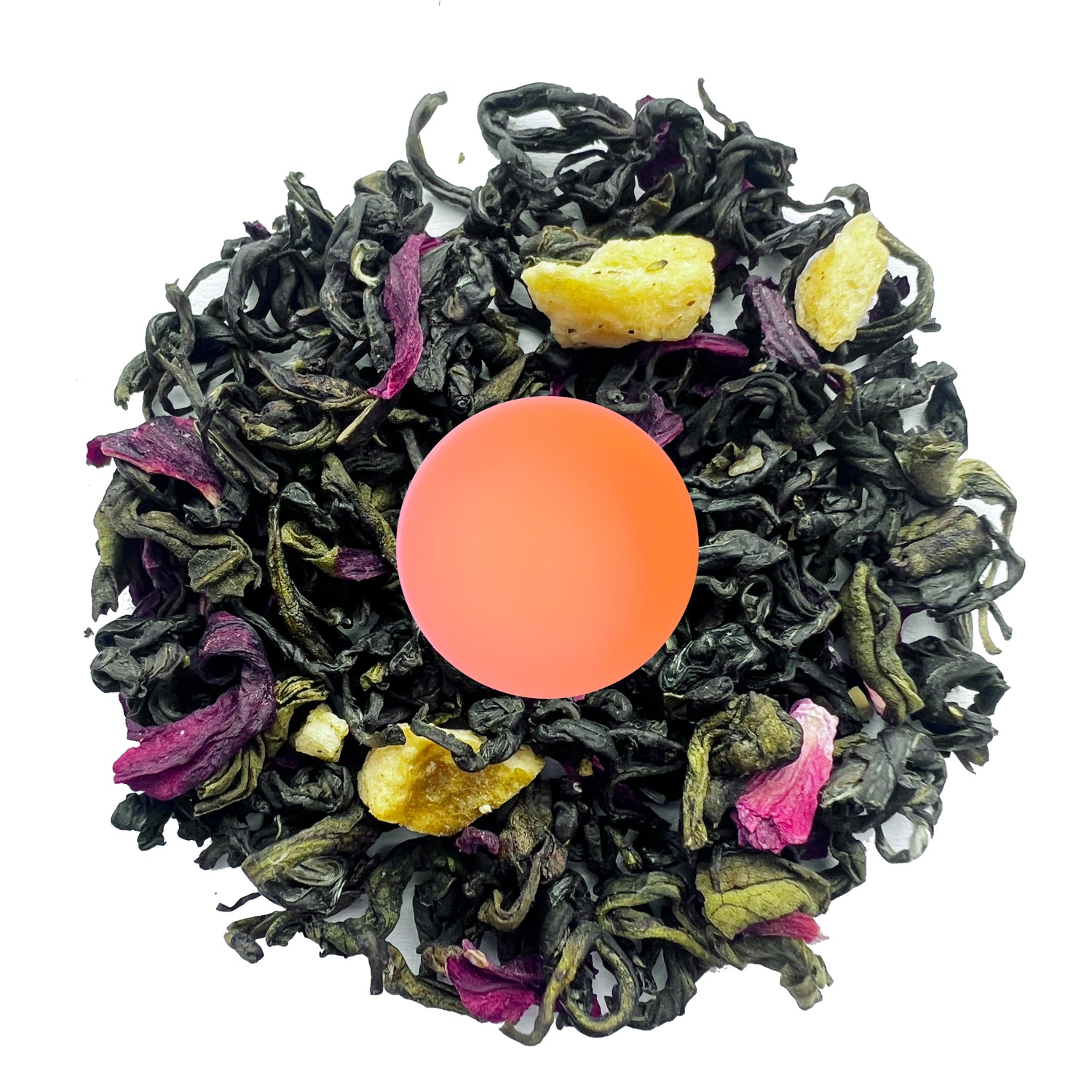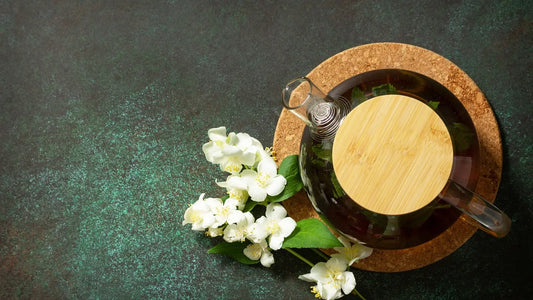Hibiscus Teas: Everything You Need to Know

A steaming cup or chilled glass of deep red hibiscus tea with its floral and citrusy aroma can be mouth-watering! The vibrant color and refreshing tang could brighten your mood, offering a burst of flavor that dances on your palate.
Curious to learn more? Let’s explore everything about this tea today.
What is hibiscus tea?
Hibiscus tea is an herbal tea that consists of dried crimson-colored calyces of the Hibiscus flower. When infused, this tea gives a deep magenta or vibrant scarlet red color.
Hibiscus tea has a fruity and tarty flavor balanced with a subtle sweetness, giving a cranberry-like taste. You’ll also get a hint of some floral undertone.

Nutritional Properties of Hibiscus Teas
Since hibiscus Tea is caffeine-free, it could be a healthier option. According to the USDA, in 100 grams of hibiscus tea, you might find the following nutrients.
- Magnesium: 3 mg
- Calcium: 8 mg
- Iron: 0.08 mg
- Potassium: 20 mg
- Phosphorus: 1 mg
- Protein: 0 g
- Energy: 0 kcal

How to make hibiscus tea?
Well, since hibiscus tea is an herbal tea, you could simply steep it into the hot water and serve it. But, don’t bind yourself. It's more exciting and fun when you experiment with different recipes and flavors. You may cold brew hibiscus tea or enjoy the Jamaican recipe.
Here’s a recommended step on how to make hibiscus tea from dried flowers or using the tea bag.
You’ll need:
- 1-2 teaspoons dried hibiscus flower or 1 tea bag
- 12 fl oz of filtered water
- 1 teaspoon of sweeteners like honey or sugar (optional)
- 1 teaspoon of lemon juice (optional)
- A kettle or saucepan
- A teacup
- A strainer
Instructions:
- First, boil the 12 fl oz of filtered water in a kettle or saucepan.
- Now, put either 1-2 teaspoons of dried hibiscus flower or 1 tea bag into your cup.
- Pour the boiling water over the hibiscus flower and steep for 4 to 10 minutes.
- Strain the tea.
- If you want, add sweeteners or flavors to enhance the taste. (Optional)
For those who are looking for more exciting hibiscus tea flavors, you could also try raspberry hibiscus tea, strawberry hibiscus tea, and rose hibiscus tea.

Hibiscus Tea Benefits
Might Relieve Menstrual Pain
As hibiscus tea has antispasmodic properties, it might help to relieve menstrual pain. It also has an analgesic effect that could support minimizing muscle spasms and inflammation. However, in case the pain persists, we strongly recommend that you consult professional healthcare.
May Boost Digestive Health
Hibiscus tea’s mild diuretic property could help to relieve symptoms like constipation, indigestion, bloating, etc. Since the tea is rich in antioxidants, it also soothes inflammation of the digestive tract. But, for severe digestive issues, we advise you to seek help from professional health personnel.
Could Support Weight Loss
Drinking hibiscus tea might help to enhance fat metabolism, supporting weight loss. When consumed without sugar, this tea is also low in calories.
May Enhance the Immune System
Hibiscus tea contains vitamin C and antioxidants that might enhance the immune system. Its antimicrobial effect might help to protect against infections.
Might Support Detoxification
As hibiscus tea acts as a natural diuretic, it contributes to increased urine which helps in eliminating waste products. Adding hibiscus to your daily routine could support your body’s natural detoxification process.
Hibiscus Tea Benefits for Skin
Hibiscus tea’s benefit extends beyond physical skin. It could also have potential advantages for your skin.
- Hibiscus tea consists of vitamin C which might be useful in enhancing collagen production.
- The antioxidant of hibiscus tea is helpful in skin protection against damage.
- As hibiscus tea has anti-inflammatory properties, it could support soothing irritated skin.
Hibiscus Tea Side Effects
While there may be potential health benefits of hibiscus tea, it could also have side effects. Here is a list of possible side effects.
- Headaches and Tinnitus
- Hormonal Imbalance
- Allergic Reactions

Hibiscus Tea FAQs
How to make hibiscus tea with fresh flowers?
To begin with, pluck the fresh hibiscus flowers that are pesticide or chemical-free. Remove the petals and rinse them in water. Boil water in a saucepan. Put the petals in a cup and pour the hot boiling water over it. Steep for around 10 minutes, add preferred flavors, and serve it!
How to dry hibiscus flowers for tea?
First, pluck the full hibiscus flowers in the morning and rinse them. Then, you could air dry, use a dehydrator, or oven dry it.
Does hibiscus tea have caffeine in it?
No, hibiscus tea is caffeine free as it's an herbal tea. This tea consists of only dried petals of the hibiscus flower.
Is hibiscus tea acidic?
Yes, since hibiscus tea has a tart flavor, it's acidic. However, acidity could vary based on the preparation and concentration.
Does hibiscus tea break fast?
Usually, hibiscus tea does not break fast when you drink it without sweeteners. But, again, it all depends on what fasting protocols you have set.
Does hibiscus tea have calories?
Yes, hibiscus tea contains calories. But, there are low calories when you drink it without sweeteners.
Is hibiscus tea safe for pregnancy?
For pregnant women, we strongly advise you to consult with your healthcare professional regarding the hibiscus tea.
What type of hibiscus is used for tea?
Usually, the Hibiscus sabdariffa flower is used for tea. It has a bright red color flower petals and tarty flavor.
How many hibiscus flowers to make tea?
It depends on you. Generally, for an 8-ounce serving, you could use around 1-2 teaspoons of dried hibiscus flowers. Or, 8-10 fresh hibiscus flowers.
Can dogs have hibiscus tea?
We recommend you contact your veterinarian to ask whether your dog can have hibiscus tea or not.

Conclusion
Try hibiscus tea yourself today – where every sip bursts with a tangy, cranberry-like taste. We’d love to hear about your wonderful experience in the comments below.








